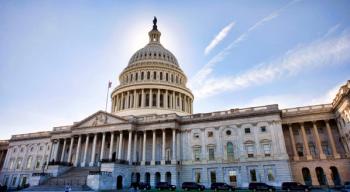
Medicare boosts pressure for wise choices
A few months ago, Medicare officials were worried that insurers and health plans might be reluctant to offer new PPO and prescription drug coverage options created by Medicare reform legislation. Now it looks like the agency's real problem is to help Medicare beneficiaries choose wisely among a multitude of coverage options.
A few months ago, Medicare officials were worried that insurers and health plans might be reluctant to offer new PPO and prescription drug coverage options created by Medicare reform legislation. Now it looks like the agency's real problem is to help Medicare beneficiaries choose wisely among a multitude of coverage options.
Many Medicare Advantage (MA) plans are expanding their service areas and applying to offer coverage in new markets in anticipation of major Medicare changes in 2006. Last month, the Centers for Medicare and Medicaid Services (CMS) announced the approval of 143 new MA plans for this year. As a result, Medicare beneficiaries now have access to 428 health plans in 49 states, including 66 new local PPOs. CMS is in the process of reviewing applications for new regional PPOs that will begin offering coverage in 2006.
THOUSANDS OF DRUG PLANS
This proliferation of PDPs reflects efforts by plan sponsors to offer a range of coverage options, including high- and low-premium designs and various copayment structures. Some MA-PD plans may offer zero-premium packages next year as a way to build plan enrollment overall. Such plans are likely to carry very high copay tiers to fit program requirements and also attract enrollees with low drug utilization histories.
The huge task for Medicare officials is to explain such options to millions of seniors, many admittedly confused about the coverage choices. With the 2006 open season enrollment period beginning in just a few months, federal and state officials are working hard to spread the message about the advantages of Medicare Part D. CMS is establishing systems to simplify enrollment of some 11 million low-income seniors who qualify for subsidies. MA plans, which now cover about 5 million Medicare beneficiaries, are also likely to be effective in explaining to plan members the benefits of signing up for prescription drug coverage.
More difficult is the task of convincing seniors with traditional Medicare fee-for-service coverage to join a stand-alone PDP. Medicare beneficiaries who use few drugs have difficulty understanding why they should pay extra for something they don't need. And those with heavy need of medicines fear that the new program will be costly without providing adequate coverage.
REVISING RATES?
The proliferation of MA plans probably reflects the fairly generous rate increases for the program in the past two years and payment changes that make the Medicare business more attractive to insurers. Some industry analysts describe the program as a "gold mine" for MCOs, but one already facing changes, as seen in the June report of the Medicare Payment Advisory Commission (MedPAC).
One proposal is to create larger regions for Medicare Advantage plans in order to stabilize payment rates and create market areas closer to those in the private sector. MedPAC also calls for "payment equality" between MA plans and fee-for-service Medicare, which includes eliminating a $10 billion "stabilization fund" for private plans.
UNINSURED CARE COSTLY
Proposals to expand coverage for some 40 million uninsured Americans are not just altruistic; they can save the U.S. healthcare system millions of dollars. A study sponsored by Families USA says that the cost of providing medical services for the uninsured increases annual health insurance rates by an average of $341 for individual U.S. workers and $922 for families. The analysis hopes to encourage efforts by a group of insurers, provider organizations, employers and think tanks to find consensus for providing health coverage to the uninsured.
Jill Wechsler, a veteran reporter, has been covering Capitol Hill since 1994.
Newsletter
Get the latest industry news, event updates, and more from Managed healthcare Executive.





















































